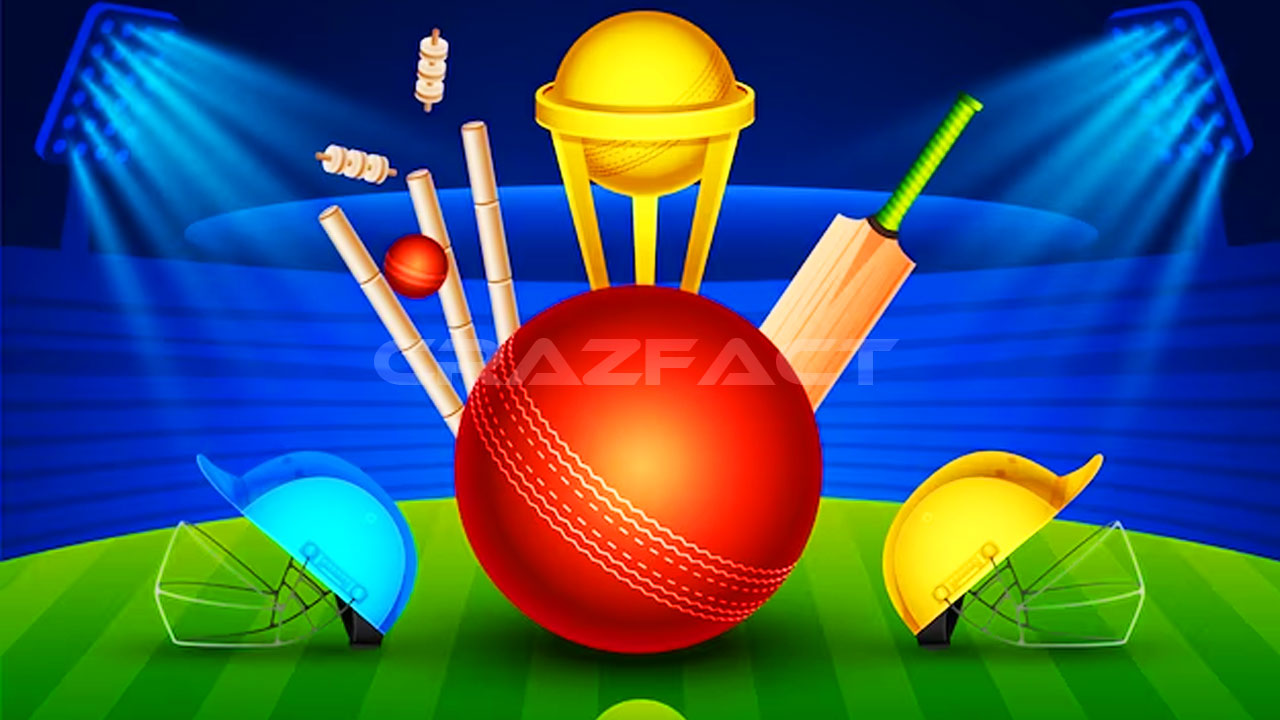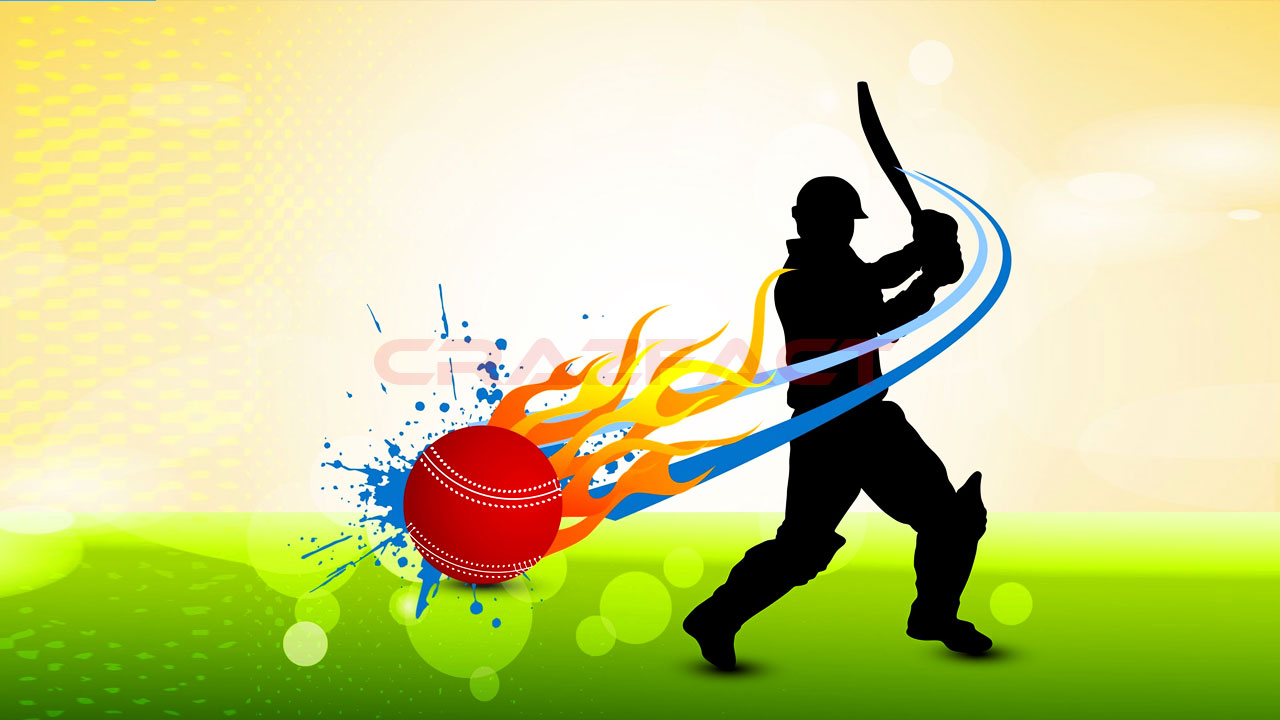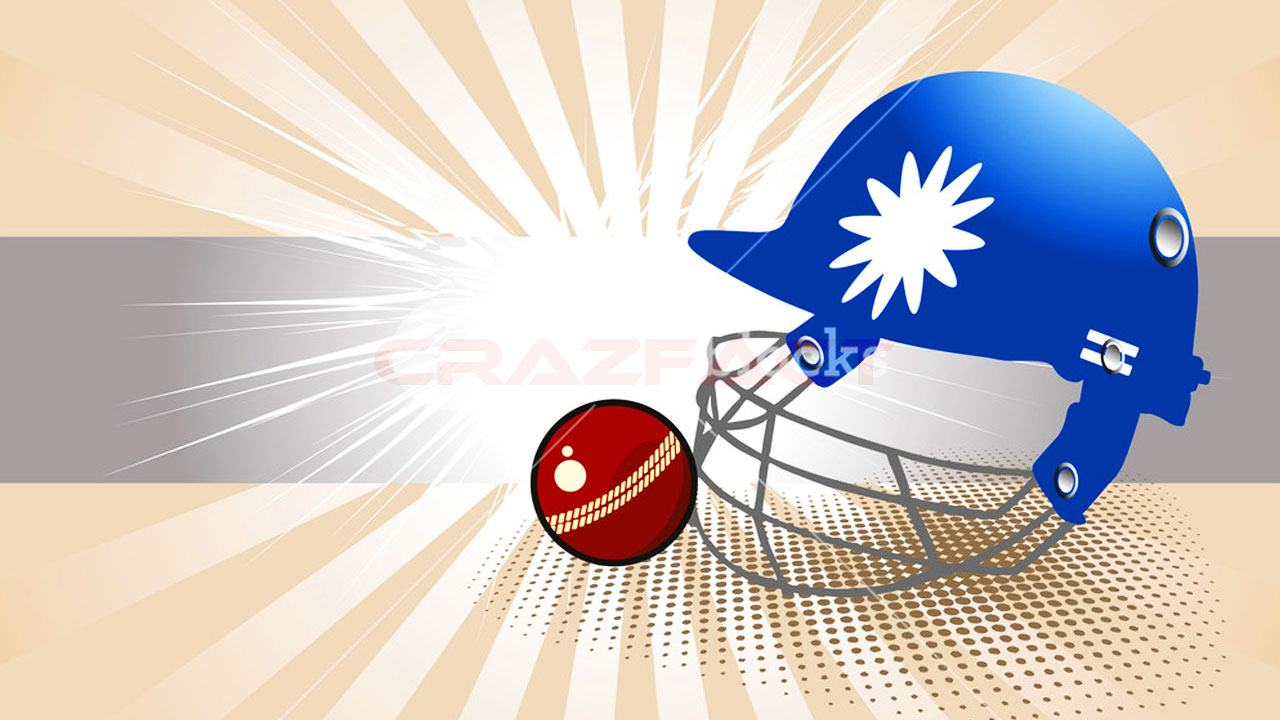Cricket is a sport played between two teams of 11 players. It is played with a bat and ball and the objective is to score runs by hitting the ball and running around a 22-yard-long rectangular pitch. The team that scores the most runs wins the game. There are different formats of the game, including Test Cricket, One Day International, and T20. It is popular in countries like India, England, Australia, and South Africa.
- Cricket is a sport played between two teams of 11 players.
- It is believed to have originated in England in the 16th century.
- The main objective is to score runs by hitting the ball and running back and forth between two wickets.
- The team with the most runs at the end of the match wins.
- Cricket is played on a large oval-shaped field.
- The game is played with a ball and a bat.
- The bowler delivers the ball to the batsman while the fielders try to catch the ball or prevent runs.
- The two main formats of cricket are Test cricket and One Day International (ODI) cricket.
- Test cricket is played over five days and ODI cricket is played over 50 overs.
- The first recorded international cricket match was played between Canada and the United States in 1844.
- The first Test match was played between Australia and England in 1877.
- The International Cricket Council (ICC) is the governing body of international cricket.
- The ICC Cricket World Cup is the biggest cricket tournament and is held every four years.
- The Indian Premier League (IPL) is a popular professional Twenty20 cricket league in India.
- Sachin Tendulkar, a former Indian cricketer, is widely regarded as one of the greatest batsmen in the history of cricket.
- Sir Don Bradman, an Australian cricketer, is considered by many to be the greatest batsman of all time.
- Cricket is played in many countries, including England, Australia, India, South Africa, and Pakistan.
- The longest format of the game, Test cricket, can last up to five days.
- The world record for the highest individual score in an inning in Test cricket is held by Brian Lara of the West Indies, with a score of 400 not out.
- The world record for the highest partnership score in Test cricket is held by the Indian pair Vinoo Mankad and Pankaj Roy, who put together a partnership of 413 runs.
- The highest team score in Test cricket is held by Sri Lanka, with a score of 952/6.
- The highest team score in ODI cricket is held by England, with a score of 481/6.
- The highest individual score in ODI cricket is held by Rohit Sharma of India, with a score of 264.
- The fastest century in Test cricket was scored by New Zealand’s Brendon McCullum, who reached 100 runs in 54 balls.
- The fastest century in ODI cricket was scored by South Africa’s AB de Villiers, who reached 100 runs in 31 balls.
- The Laws of Cricket are maintained and updated by the Marylebone Cricket Club (MCC).
- Cricket has a rich history and has been depicted in art, literature, and popular culture.
- The terminology used in cricket can be confusing for those unfamiliar with the sport, with terms such as “duck,” “silly point,” and “googly” all having specific meanings.
- Cricket is a sport that requires skill, technique, and tactics.
- Bowlers use a variety of deliveries, including fastballs, spin balls, and seam balls, to deceive the batsman.
- Batsmen have a range of shots, including the cover drive, cut, and pull.
- Fielders use different tactics, such as setting attacking or defensive fields, to try and stop the batsman from scoring runs.
- The wicketkeeper is a specialized fielder who stands behind the wicket and is responsible for catching deliveries that pass the batsman.
- Cricket is known for its rich traditions, including tea breaks and the custom of shaking hands at the end of a match.
- The use of technology, such as Hawk-Eye and Snickometer, has become increasingly common in cricket to assist with decision-making.
- The lbw (leg before wicket) rule, which states that a batsman can be given out if the ball would have hit the wicket if not for the batsman’s body, is one of the most debated rules in cricket.
- The DRS (Decision Review System) allows teams to challenge umpiring decisions using technology.
- The first recorded women’s cricket match was played in England in 1745.
- The Women’s Cricket World Cup is held every four years, with Australia being the most successful team, winning six out of the twelve tournaments held so far.
- T20 cricket, a shortened format of the game played over 20 overs, was introduced in 2003 and has become increasingly popular.
- The first T20 World Cup was held in 2007 and was won by India.
- Cricket has a strong following, with millions of fans around the world.
- The sport is also a source of national pride, with many countries fielding strong teams and competing against each other in international tournaments.
- Cricket has produced many legendary players, including Sir Vivian Richards, Sir Garfield Sobers, and Sir Ian Botham.
- The use of performance-enhancing drugs is strictly prohibited in cricket and can result in severe penalties for players found guilty.
- Cricket is played on artificial surfaces, such as matting and AstroTurf, in addition to traditional grass pitches.
- The dimensions of a cricket pitch are standardized, with the length being 22 yards (20.12 meters) and the width being 10 feet (3.05 meters).
- The boundary lines, which mark the edge of the playing area, are usually set at a minimum of 70 yards (64 meters) from the center of the pitch.
- The coin toss is an important tradition in cricket, with the winning team having the option to choose whether to bat or bowl first.
- There are different techniques used by bowlers to grip the ball, including the seam-up grip and the off-spin grip.
- Cricket has a reputation for being a gentleman’s sport, with players expected to show good sportsmanship and respect for their opponents.
- The use of sledding, or using verbal insults to try and distract the opposition, is sometimes seen in cricket but is widely discouraged.
- Field placements and captaincy decisions are key elements in the strategy of the game.
- The umpires play a crucial role in cricket, making important decisions such as declaring a batsman out and signaling a no-ball.
- The spirit of cricket, which emphasizes fair play and respect for opponents, is an important aspect of the game.
- The size and shape of cricket balls have evolved over time, with modern balls being lighter and less bouncy than those used in the past.
- Different types of cricket balls are used in different formats of the game, with red balls used in Test cricket and white balls used in limited-overs cricket.
- There are various cricket shot techniques used by batsmen, including the cover drive, the square cut, and the pull shot.
- The Laws of Cricket are standardized and provide the framework for the sport, outlining rules for everything from the size of the field to the procedures for handling rain delays.
- The MCC (Marylebone Cricket Club), based at Lord’s Cricket Ground in London, is the guardian of the Laws of Cricket and is responsible for making changes and updates to the rules.
- The ranking system in cricket is used to determine the best teams in the world and is based on a points system, taking into account factors such as recent form and the strength of the opposition.
- The career of a cricketer can be influenced by a number of factors, including injuries, form, and selection decisions.
- Cricket has been played for over 400 years, with the first recorded match taking place in the 16th century.
- The original form of cricket was played with a bowler and a batter, with the bowler trying to hit the batter’s wicket and the batter trying to defend it.
- Cricket has evolved over the years to become the sport we know today, with changes such as the introduction of limited-overs cricket and the use of technology in decision-making.
- Many countries, including England, Australia, South Africa, and India, have a rich cricketing history and have produced many talented players over the years.
- The popularity of cricket varies around the world, with some countries, such as India and Pakistan, having millions of fans and a strong following, while in other countries it is less well-known.
- The role of the coach in cricket is important, with coaches responsible for tactics, team selection, and player development.
- The use of cricketing statistics, such as average runs per innings and strike rate, is widespread in the sport and is used to evaluate player performance.
- Cricket grounds come in various sizes and shapes, with some, such as the Melbourne Cricket Ground and Lord’s Cricket Ground, being iconic and steeped in history.
- The cricketing calendar is packed with international matches and domestic competitions, with something to watch for fans throughout the year.
- The future of cricket looks bright, with the sport continuing to evolve and attract new fans around the world.
- There are numerous cricketing records, including the highest individual scores, most wickets taken, and most runs scored in a career.
- The importance of fitness and conditioning in cricket cannot be overstated, with players needing to be in peak physical condition to perform at their best.
- There are various cricketing academies and training facilities around the world, providing young players with the opportunity to develop their skills and progress in the sport.
- The role of the captain in cricket is crucial, with the captain responsible for leading the team on the field and making important decisions.
- Cricket has a strong tradition of producing outstanding all-rounders, players who excel in both batting and bowling.
- The use of pitch maps and video analysis is becoming increasingly common in cricket, with teams using technology to gain an advantage.
- There is a strong sense of community in cricket, with players and fans coming together to enjoy the sport and support their teams.
- The role of the media in cricket is significant, with coverage of the sport reaching millions of fans around the world.
- There are various cricketing awards and honors, such as the Sir Garfield Sobers Trophy for ICC Cricketer of the Year and the Wisden Cricketer of the Year, which recognize and reward outstanding player performance.
- Cricket has produced some of the greatest rivalries in sports, such as the Ashes between England and Australia and the India-Pakistan rivalry.
- The game of cricket has given birth to numerous expressions and phrases in common usages, such as “sticky wicket” and “bowled over”.
- The popularity of T20 cricket, with its fast-paced and action-packed format, has grown significantly in recent years and attracts new fans to the sport.
- The use of sports psychology and mental preparation techniques is becoming increasingly important in cricket, with players looking to gain an edge mentally as well as physically.
- The process of developing new cricketing talent is ongoing, with many countries investing in youth programs and player development initiatives.
- The role of the umpire in cricket is crucial, with umpires responsible for making decisions on the field and ensuring the rules are followed.
- Cricket has inspired a number of books, movies, and documentaries, showcasing the sport and its history to fans around the world.
- The art of swing bowling, in which the bowler makes the ball deviate in the air, is a vital component of cricket and requires skill and practice to master.
- The use of performance-enhancing drugs in cricket is strictly prohibited and players found guilty of such offenses face severe penalties.
- Cricket has been included in the Commonwealth Games and was a demonstration sport in the 1998 Kuala Lumpur games.
- The art of spin bowling, in which the bowler makes the ball turn on impact with the pitch, is a vital component of cricket and requires skill and guile to master.
- Cricket has a strong tradition of supporting charitable causes and giving back to communities, with players and organizations involved in a range of initiatives.
- The use of DRS (Decision Review System) technology in cricket, allowing for the review and overturn of on-field decisions, has been the subject of much debate and discussion.
- Cricket has produced many memorable moments and incidents, such as the 2005 Ashes series, the 1992 World Cup, and the 1999 Cricket World Cup final.
- The role of the fan in cricket is important, with fans supporting their teams, attending matches, and following the sport through various media channels.
- Cricket has a strong tradition of player specialization, with some players focusing on batting, some on bowling, and others on fielding.
- The study of biomechanics in cricket is becoming increasingly important, with players and teams looking to optimize technique and reduce the risk of injury.
- Cricket has been played in many unusual locations, including deserts, rooftops, and even in space, showcasing the versatility and global appeal of the sport.
- Cricket will continue to evolve and grow in the coming years, attracting new fans and producing new stars, and remains one of the most beloved and respected sports in the world.







